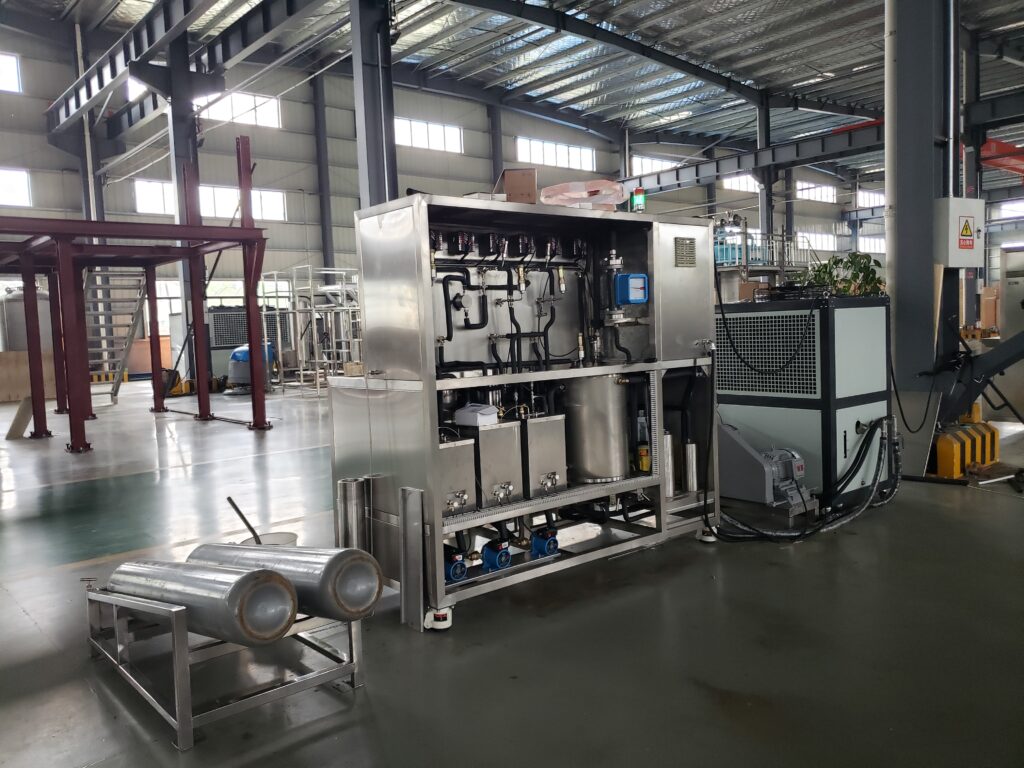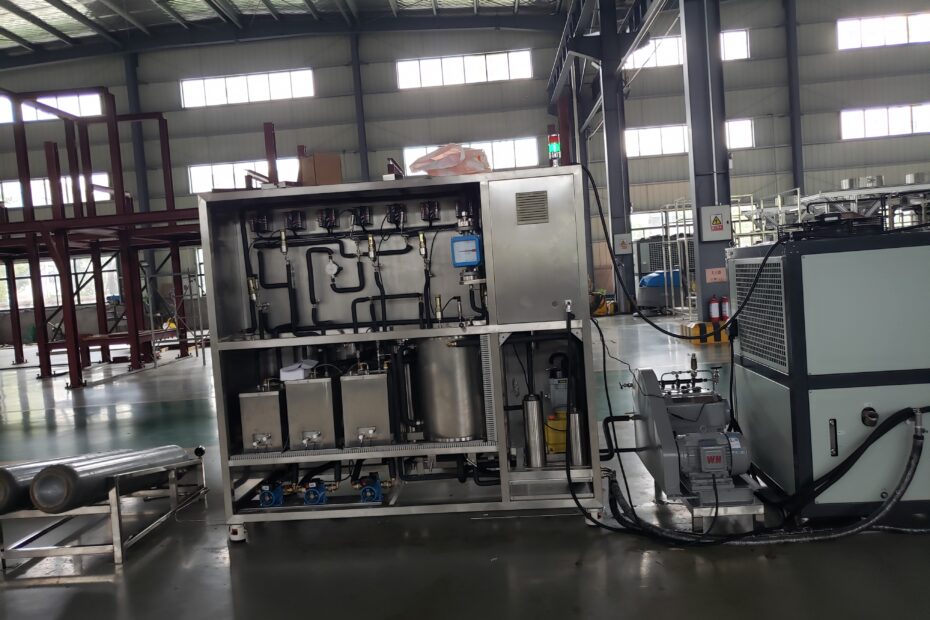Supercritical CO2 fluid extraction technology is a new separation technology in modern chemical separation. It has the characteristics of fast mass transfer rate, strong penetration ability, high extraction efficiency and low operating temperature. This technology has been widely used in medicine, food, chemical industry and other industries.
The supercritical CO2 fluid extraction device is equipment used for supercritical fluid extraction. The device is mainly composed of a freezing part, a pressurizing part, an extraction part, a separation part and a recovery part. However, depending on the production process and fluid medium, the composition of the device Also different.
Its main extraction process consists of two parts: extraction and separation. In the extraction equipment, at a specific temperature and pressure, the raw materials are brought into contact with the supercritical fluid. When the dynamic balance of the material components between gas and liquid is reached, the temperature and pressure are adjusted to separate the extraction product from the supercritical fluid to complete the supercritical process. The entire process of extraction.
The supercritical CO2 extraction device can be used to extract materials (solid and liquid) at high pressure and suitable temperature under separator replacement conditions, so that the soluble materials can decompose the target products during the extraction and separation process.
Issues that should be paid attention to when using supercritical extraction equipment
- During supercritical CO2 extraction in winter, due to the influence of temperature, the pressure of the CO2 bottle drops, generally between 4~5Mpa. In order to maintain normal operation, a heating device must be installed, or the indoor greenhouse must be kept elevated. It can be used when the pressure of the CO2 cylinder reaches 6Mpa.
- Pay attention to the expansion valve clogging accident, so that the refrigeration cannot meet the required requirements, which can be judged by the changes in the pressure gauge (especially the pressure drop, lower than the normal value).
- Pay attention to the corrosion problem of the entrainer. Stainless steel materials will suffer varying degrees of corrosion in the supercritical state, including local corrosion, of which pitting corrosion (also known as pitting corrosion) is the most serious.
- When “water blockage” occurs, the machine should be shut down first, and it is best to use nitrogen to purge the coil. If there is no nitrogen, the refrigerant can also be released and the water vapor can be discharged out of the tube by heating.
- When the supercritical extraction device is shut down for a long time, CO2 cleaning pipeline with modifier (Tongri ethanol) needs to be added to prevent some materials from adhering to the pipe wall and causing blockage. When replacing extraction materials, pipes and equipment should also be cleaned.

Five major issues need to be paid attention to for the smooth operation of supercritical carbon dioxide extraction equipment
Winter Operation Challenges
During supercritical CO2 extraction in winter, the impact of low temperatures can lead to a drop in the pressure of the CO2 bottle, typically ranging between 4 to 5 MPa. To maintain optimal operating conditions, it is imperative to install a heating device or keep the extraction area temperature elevated, particularly in indoor greenhouses. Operators should monitor the CO2 cylinder pressure and initiate extraction only when it reaches a sufficient level, typically around 6 MPa.
Expansion Valve Clogging
One of the critical issues to watch out for is the possibility of the expansion valve getting clogged. This can impede the refrigeration process, adversely affecting the required conditions for supercritical CO2 extraction. Operators should keenly observe pressure gauge readings, especially noting any significant pressure drops below the normal values. Immediate action should be taken if signs of clogging are detected, ensuring uninterrupted and efficient extraction.
Corrosion of Entrainer
Supercritical CO2 extraction systems often employ stainless steel components. However, it’s crucial to be aware of potential corrosion issues, especially in the supercritical state. Stainless steel may undergo various degrees of corrosion, with pitting corrosion being the most severe. Regular inspections and preventive measures, such as choosing corrosion-resistant materials or applying protective coatings, can help mitigate this challenge and extend the equipment’s lifespan.
Addressing “Water Blockage”
In the event of “water blockage,” where water vapor accumulates in the system, immediate action is required. The machine should be shut down promptly. Ideally, nitrogen should be used to purge the coil, preventing further complications. In the absence of nitrogen, releasing the refrigerant and using heating to discharge water vapor from the tubing is an alternative method. Quick and efficient response to water blockage incidents is crucial to preventing damage and ensuring the reliability of the extraction process.
Long-Term Shutdown Precautions
When the supercritical extraction device is slated for a prolonged shutdown, preventive measures become paramount. Adding CO2 with a cleaning pipeline containing a modifier, such as Tongri ethanol, helps prevent the adhesion of materials to the pipe walls, minimizing the risk of blockages. Additionally, during the replacement of extraction materials, thorough cleaning of pipes and equipment is necessary to maintain the integrity of subsequent extraction processes.
Conclusion
The successful operation of supercritical CO2 extraction equipment requires a proactive approach in addressing these specific issues. Regular monitoring, preventive maintenance, and swift responses to potential challenges are essential to ensure the reliability, efficiency, and longevity of the equipment in the dynamic field of essential oil production.
